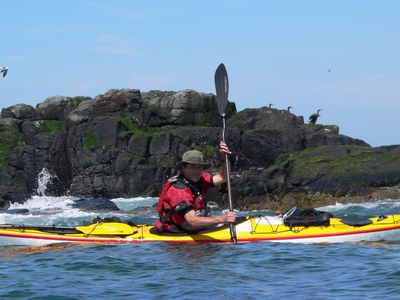On the water
Paddle in a pod
Like dolphins, a pod refers to a group of kayakers that stay together. Paddling in a pod means there's always somewhere available to help quickly if someone capsizes or there's another emergency. Remember:
- Make someone a party leader;
- Always paddle at the pace of the slowest member; and
- If weather or sea conditions worsen beyond the skills of anyone in your pod, find shelter or the shore by the safest route.
Look out
- Always keep scanning the area for approaching vessels (high speed vessels will close on you quicker than expected).
- Never assume the approaching vessel has seen you.
- Take early evasive action if a vessel is on a collision course with you.
- If travelling in a pod keep together when crossing shipping lanes, take the shortest route and pick a time to cross between the vessels that are using the lanes.
Safety
- If you capsize, stay with your kayak, keep your paddle – your kayak is more visible than just a lone swimmer.
- Your kayak provides you with more buoyancy than just your personal flotation device.
- Signal with a vertical paddle (hold it straight up in the air) to passing vessels if you need assistance.
- Use the Heat Escape Lessening Position (H.E.L.P) to retain body heat while waiting for assistance (refer to first aid material to find H.E.L.P techniques).
- Use any communication available to attract attention and ask for help.
Remember
If you are going to areas (for example, inland water ways) where there is no cell phone or VHF radio coverage, take a 406 personal locator beacon or an emergency position indicating radio beacon.
Dress for the conditions – stay warm, stay hydrated and stay fuelled. You'll enjoy your paddling experience all the more.
Environment
Please respect the environment wherever you are. Keep all rubbish with you and dispose of it at a shore-based facility.
Take nothing but photos and leave nothing but footprints.
If in doubt, don't go out!

